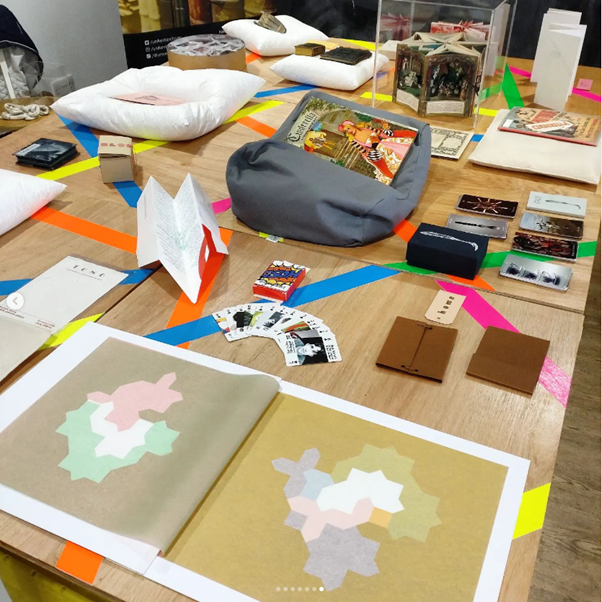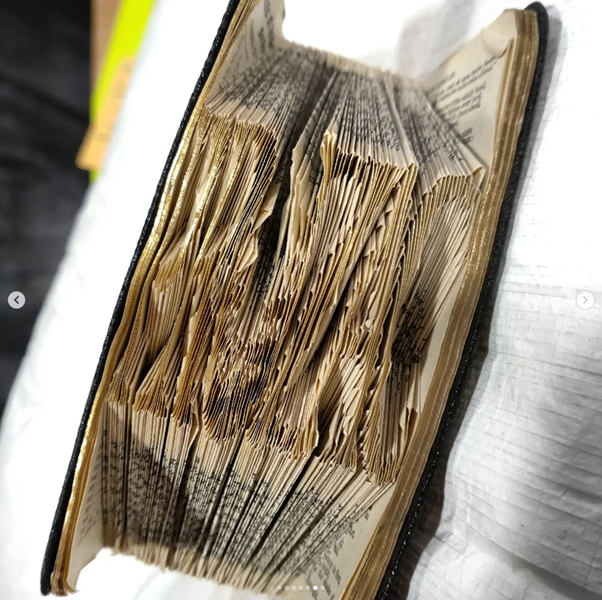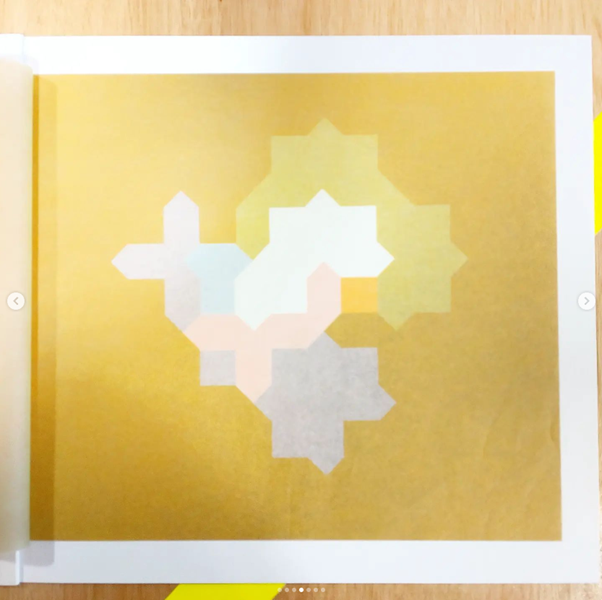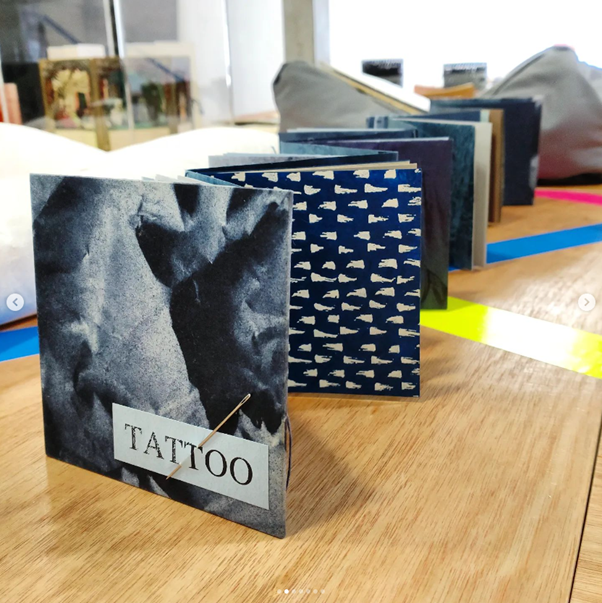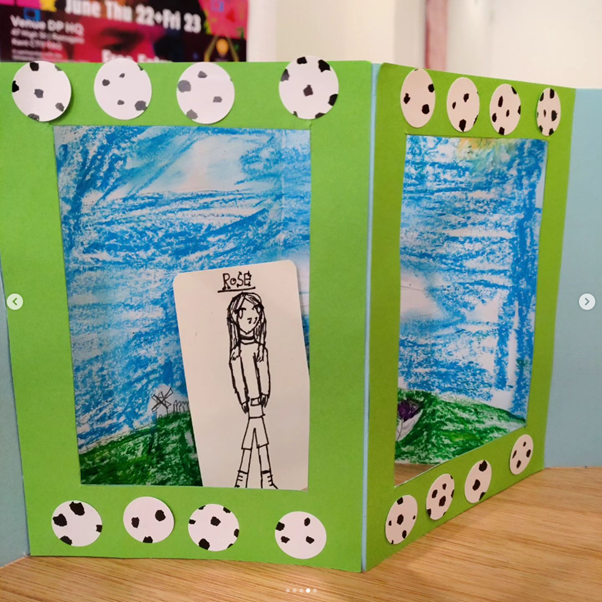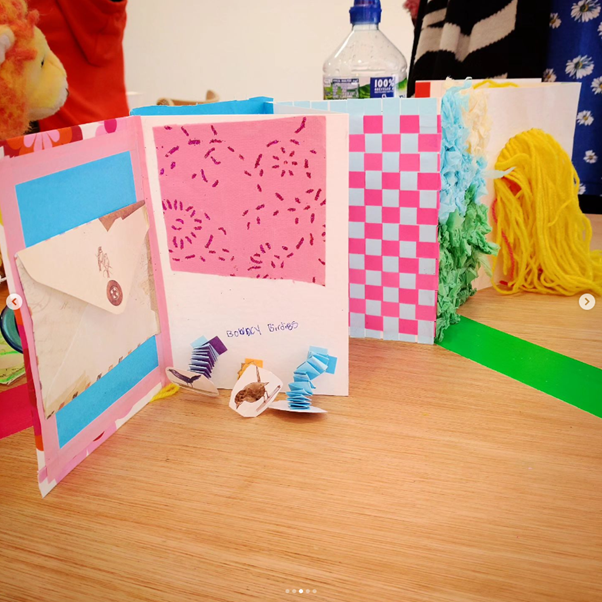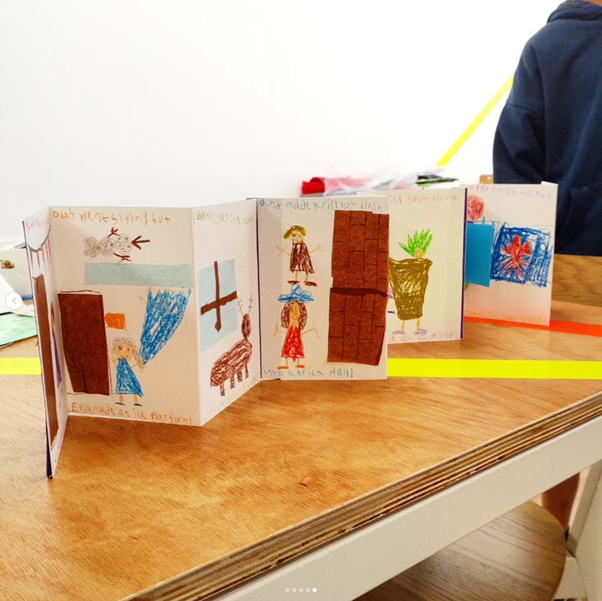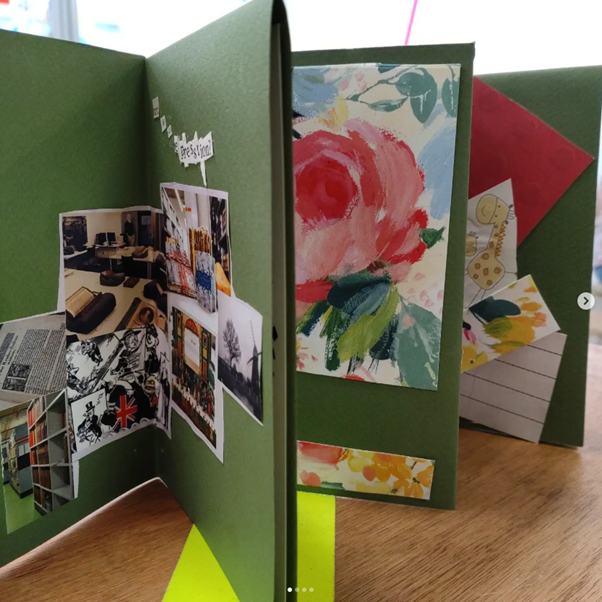For the book lover, the book is often comfort, adventure, escape, and home-coming all at once. There can be nothing as delicious as settling into a cosy armchair with a steaming mug of tea and lifting the book into one’s lap, opening the cover and absorbing oneself and one’s senses in turning, gazing, reading the pages and the words thereon. We would all likely recognise a book, we have grown up browsing the shelves in libraries and book shops, judging covers, considering blurbs, selecting the next read to suit our interests. Typically, we recognise a book as being a text-block of multiple pages, bound together, and protected by covers and sometimes dust-jackets. We know books can come in a variety of different shapes and sizes, and have different features such as illustrations, pull-outs, glossaries, or perhaps ribbons to serve as bookmarks. But it’s not often we realise the art of the book, the book as a work of art. Last week we visited Discovery Planet, Ramsgate, with Stella Bolaki from the School of English and Tina Lyons, a book artist, to explore this with our Prescriptions: Artist Books Collection and complementary items from the rest of Special Collections & Archives.
Over the course of two workshops with a local Home Education Group and year 9s from The Royal Harbour Academy, as well as a free drop-in day for the public, we both engaged children and young people with questions of what makes a book, and helped them make one for themselves. It is always gratifying to find collections come to life in new conversations, and I was astounded by the intelligence and creativity with which these groups approached book forms never seen before. Sophie Adams’ Book of common prayer prompted conversations about the origins of print and the prevalence of religious literature during those early years when the technology was in its infancy, from the Gutenberg to the King James’ Bible. Besides that, it also showed how texts could be repurposed to have alternative meanings and highlighted how simple folds could change a book into something more sculptural and three-dimensional. Gemma Lacey’s Home fascinated people with its loose leaf format, for what happens to narrative linearity when a book is unbound?
One highlight for me was simply having time to sit with and interpret two of my favourites from the collection for myself: Randi Annie Strand’s Arabesque 3 and Martha Hall’s Tattoo. Having recently visited an exhibition of Arabic and Islamic art in the Re-Orientations exhibition at the Kunsthaus Zürich, Switzerland, I was immediately drawn to Strand’s geometric patterns that alternate as one turns the fine tissue pages of Arabesque 3, and the encounter offers a tangible metaphor of how one would treat a patient: with care, patience, delicacy. Martha Hall’s concertina Tattoo features inserted stitched booklets that narrate the artist’s own revised perceptions of tattoos, from something signally naval occupation or corroborating stereotypes of hyper-masculinity to something that is necessitated by certain medical treatments, such as radiation for cancer, and even evocative of inner female strength, as sported by women over mastectomies.
Having introduced Special Collections & Archives, and welcomed groups to encounter these artist books for themselves, the workshops turned to making books: encouraging our young people to reflect both on the collections and their own stories and emotions as they folded, cut out, manipulated paper to craft books for themselves. On the Friday we were lucky to have book artist, Tina Lyons, with us, and she took us step-by-step through making a T-fold booklet as well as extended concertinas. (Check out her videos to have a go yourself!) On Saturday, Stella Bolaki led the groups and it was astonishing to see the diversity of approaches and creations that stemmed from her instructions. I have to give a special commendation to Leo and Libby for their mutual dedication and inspiration. Leo’s Art is an expression for his dad (just in time for Father’s Day) featured multiple sensory pages to signify, for instance, the satisfaction and confusion art can evoke. Libby was inspired by the form of Allison Cooke Brown’s Core sample, and – prompted by conversations regarding the status of the book as something special, even a gift – made a beautiful slip-case for her concertina book. We also had a variety of big books, little books, pop-up books, stitched books, handbag books, every book you could imagine. To close, I can only showcase a sample of what was made – enjoy!

